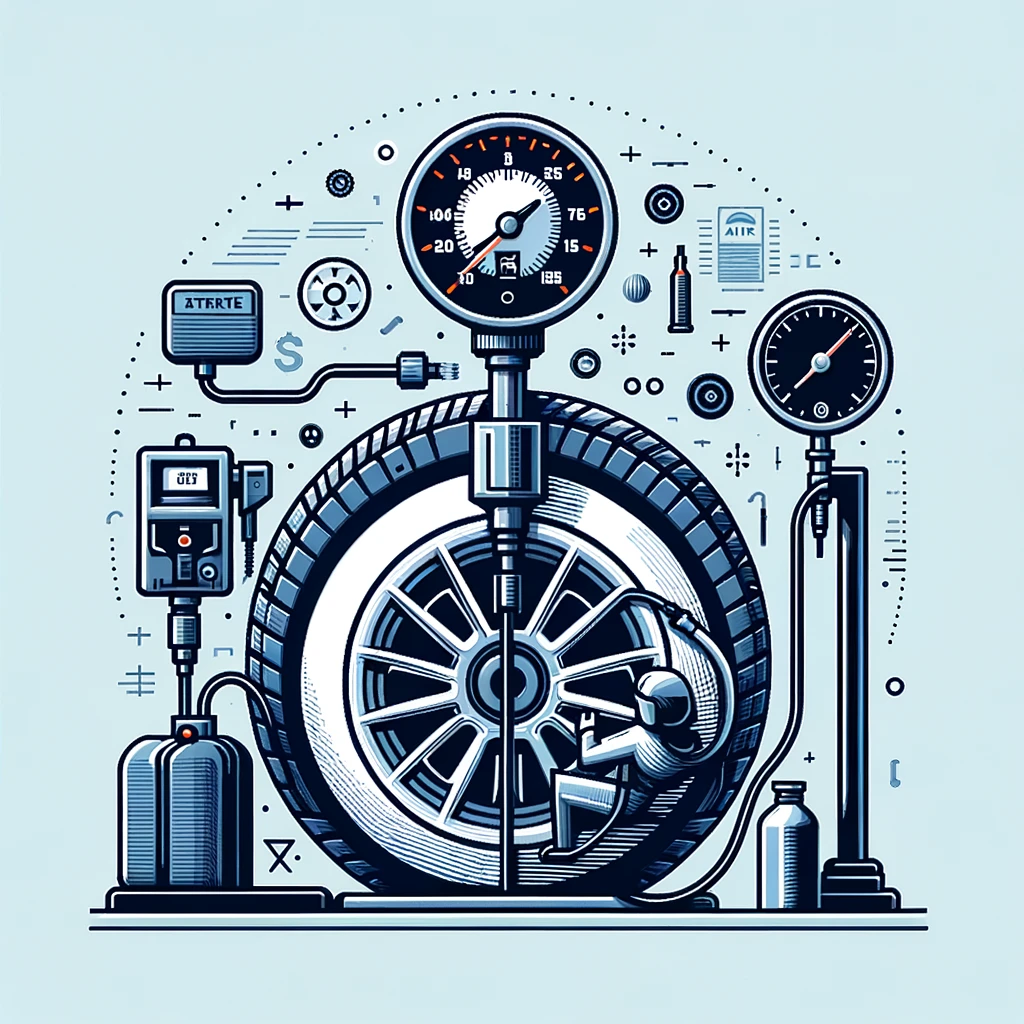Maintaining the correct air pressure in your vehicle’s tires is critical for safety, performance, and fuel efficiency. This guide will walk you through the simple steps to check and inflate your tires correctly.
Introduction
Proper tire inflation is a key aspect of vehicle maintenance that many drivers overlook. Driving with improperly inflated tires can lead to increased wear, reduced fuel efficiency, and, most critically, decreased safety.
What You’ll Need
- A tire pressure gauge
- An air compressor (available at most gas stations)
- Your vehicle’s recommended tire pressure (found in the owner’s manual or on a sticker inside the driver’s side door)
Steps to Put Air in Tires
Step 1: Check Current Tire Pressure
- Remove the Cap from the Tire Valve: Unscrew the cap on the tire’s valve stem and set it aside where it won’t get lost.
- Press the Tire Gauge onto the Valve Stem: Firmly press the tire gauge onto the valve stem and read the pressure level. Remove the gauge to get a clear reading.
- Compare with Recommended Pressure: Check the pressure against your vehicle’s recommended settings. Remember, tire pressure can vary for front and back tires.
Step 2: Inflate the Tires
- Locate an Air Compressor: You can find air compressors at most gas stations. Some are free, while others require coins or a small fee.
- Attach the Air Compressor Hose to the Valve Stem: Press the hose fitting down on the valve stem and secure it in place.
- Inflate the Tires: Fill the tire, periodically checking the pressure by removing the hose and using your gauge. Continue until you reach the recommended pressure.
- Do Not Overinflate: Be careful not to exceed the recommended pressure as this can be just as harmful as underinflation.
Step 3: Replace the Valve Caps
- Screw the Caps Back On: Once all tires are properly inflated, replace the valve caps. This prevents dirt and debris from getting into the valve stem.
Frequently Asked Questions (FAQs)
How often should I check my tire pressure?
It’s recommended to check your tire pressure at least once a month and before any long trips. Tire pressure should also be checked when the tires are cold, as heat can cause an increase in pressure readings.
What is the right tire pressure for my vehicle?
The correct tire pressure for your vehicle is typically listed in the owner’s manual and on a sticker inside the driver’s side door. This pressure is the optimal level for safety, efficiency, and tire longevity.
Can I use any air pump to inflate my tires?
Yes, most air pumps at gas stations and portable air compressors are suitable for inflating car tires. Ensure the air pump matches the valve type on your tires, which is generally a standard Schrader valve on most passenger cars.
What happens if I overinflate my tires?
Overinflating your tires can lead to decreased traction, premature tire wear, and an increased risk of tire blowouts due to less tire surface area touching the road and increased pressure on the tire itself.
Is there a difference between summer and winter tire pressures?
Yes, tire pressure can decrease in colder weather and increase in warmer weather. It’s important to adjust your tire pressure with seasonal temperature changes to maintain the recommended PSI.
How do I know if my tires are leaking?
If you find yourself needing to add air to your tires frequently, this could be a sign of a leak. Inspect the tires for any punctures, cuts, or embedded objects like nails. Also, check the valve stems for damage or leaks.
What do I do if my tire keeps losing air after inflating?
If a tire continually loses air, it may have a slow leak. This could be due to a puncture, faulty valve stem, or a poor seal between the tire and the wheel. It’s advisable to have the tire inspected by a professional to determine the cause and necessary repairs.
Conclusion
Regularly checking and adjusting your tire pressure is a simple yet crucial part of vehicle maintenance. It’s recommended to check your tire pressure monthly and before long trips or when carrying extra load. Proper inflation ensures optimal tire performance, maximizes tire life, and improves overall safety on the road.
